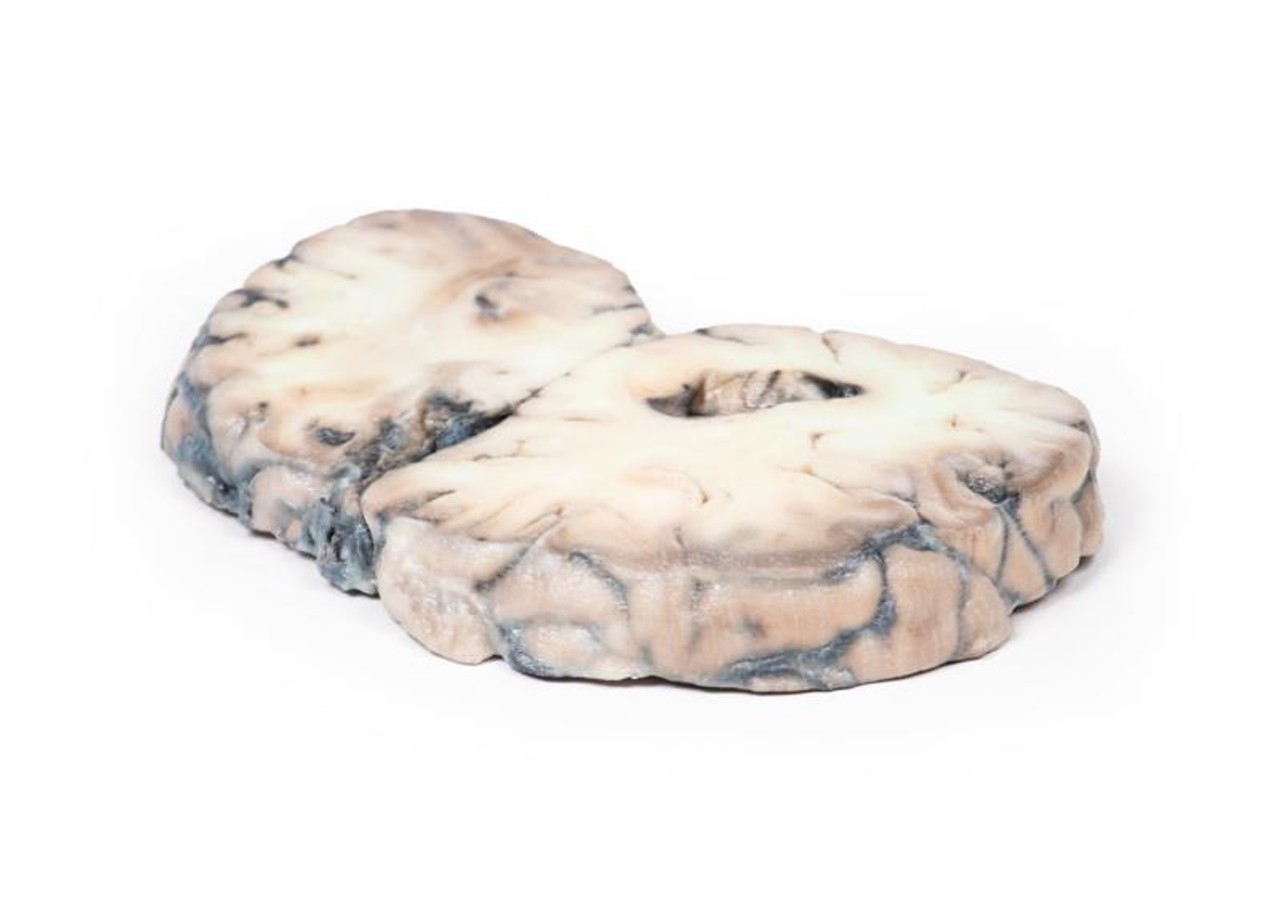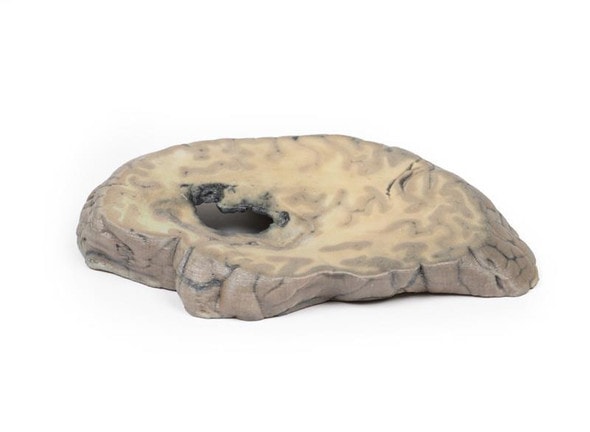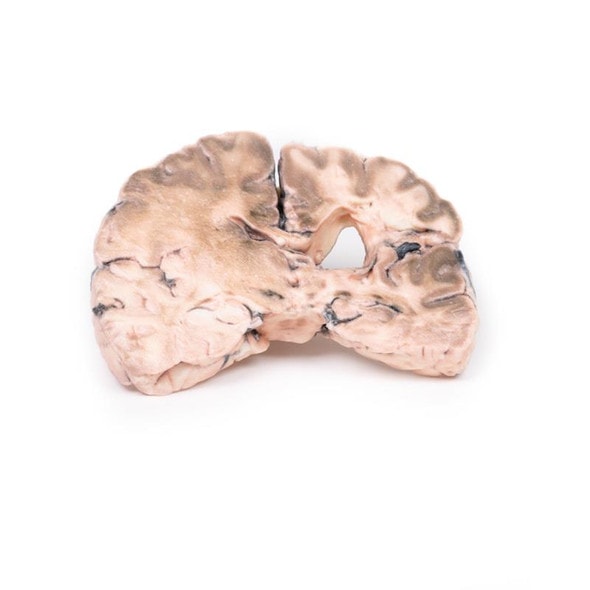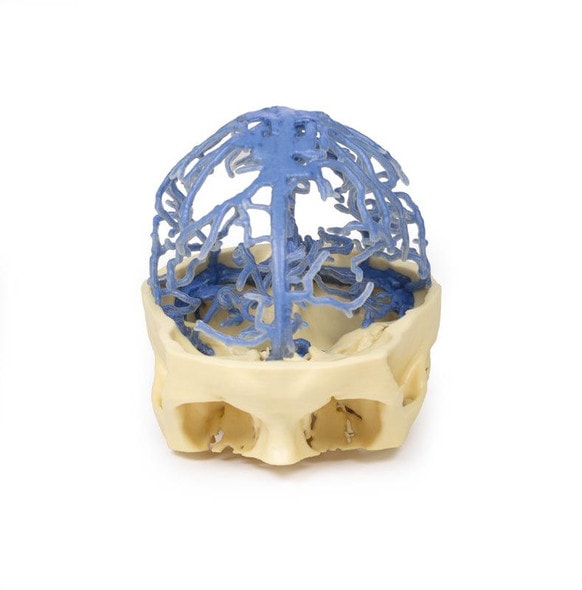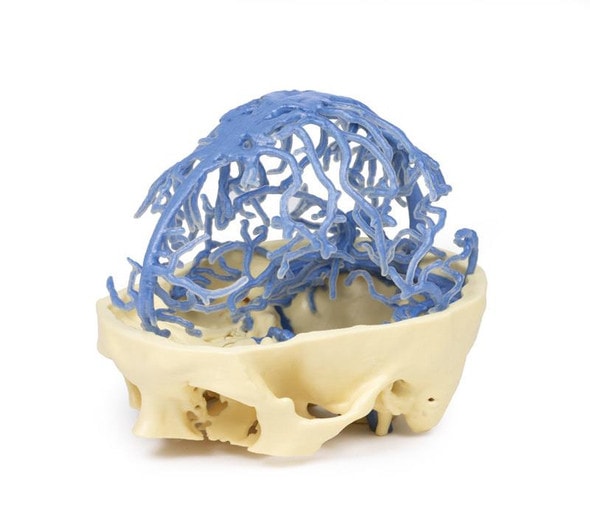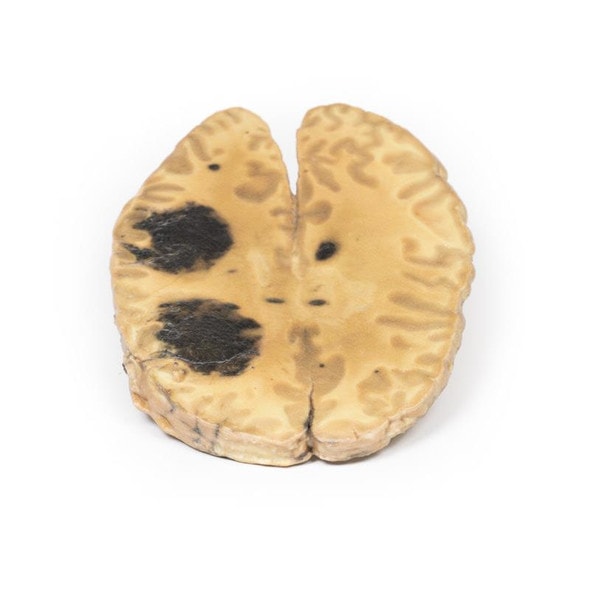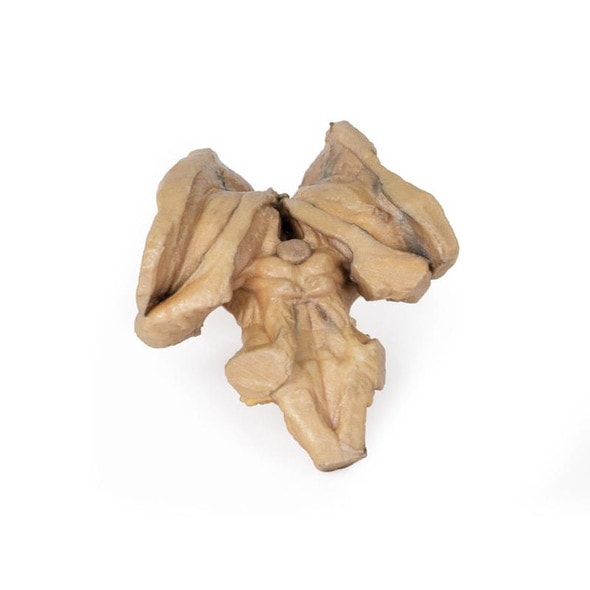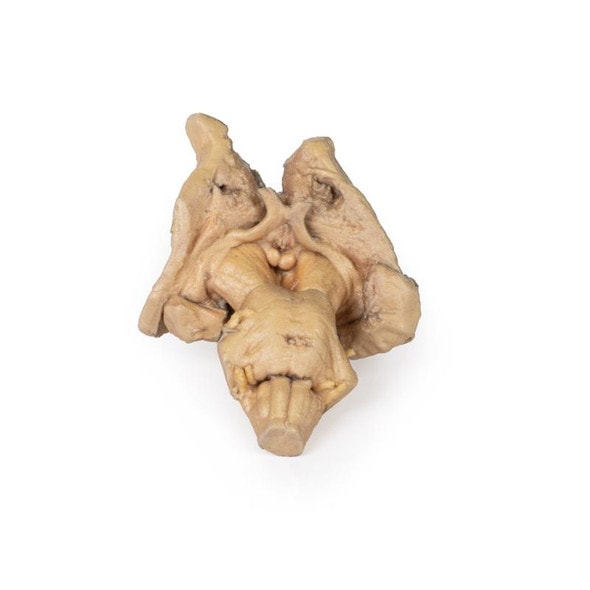Description
Developed from real patient case study specimens, the 3D printed anatomy model pathology series introduces an unmatched level of realism in human anatomy models. Each 3D printed anatomy model is a high-fidelity replica of a human cadaveric specimen, focusing on the key morbidity presentations that led to the deceasement of the patient. With advances in 3D printing materials and techniques, these stories can come to life in an ethical, consistently reproduceable, and easy to handle format. Ideal for the most advanced anatomical and pathological study, and backed by authentic case study details, students, instructors, and experts alike will discover a new level of anatomical study with the 3D printed anatomy model pathology series.
Clinical History
This patient died at the age of 58 years from post-operative complications following transurethral resection of the prostate. At the ages of 28 and 35, he had suffered two episodes of transient neurological deficit. However, at 50 years, he developed permanent hemiparesis of the left leg chiefly affecting his ankle.
Pathology
The specimen is a coronal slice of the brain that passes through the parietal lobes. Cortex and white matter on the medial aspect of the right cerebral hemisphere have been replaced by a mass of abnormal tissue 4 cm in greatest diameter. This lesion extends from the superior surface down to the roof of the lateral ventricle. A closer inspection reveals the tissue to be a network of tortuous vascular channels and intervening tissue.
Histological examination of this arterio-venous malformation showed glial tissue surrounding dilated vessels. All vessels had a typical endothelial lining, some showed thick muscular walls and others thin walls, thus identifying themselves as arteries and veins, respectively.
Further Information
The most frequently observed problems, related to cerebral arteriovenous malformations (AVM), are headaches, seizures, cranial nerve deficits and back pain, and nausea may follow the occurrence of coagulated blood escaping into the CSF in the vertebral column. Some patients with AVM have no symptoms at all. Progressive weakness and numbness and vision changes as well as debilitating, excruciating pain may also occur depending on the location of the AVMs. In serious cases, the vessels may rupture and cause intracranial hemorrhage. In patients with AVM hemorrhage, symptoms caused by bleeding include loss of consciousness, sudden and severe headache, nausea, vomiting, incontinence, and blurred vision, amongst others. Local damage on the bleed site are also possible and can cause seizure, one-sided weakness (hemiparesis, as in this patient), a loss of touch sensation on one side of the body, and deficits in language processing (aphasia). Ruptured AVMs are responsible for considerable mortality and morbidity.
Advantages of 3D Printed Anatomical Models
- 3D printed anatomical models are the most anatomically accurate examples of human anatomy because they are based on real human specimens.
- Avoid the ethical complications and complex handling, storage, and documentation requirements with 3D printed models when compared to human cadaveric specimens.
- 3D printed anatomy models are far less expensive than real human cadaveric specimens.
- Reproducibility and consistency allow for standardization of education and faster availability of models when you need them.
- Customization options are available for specific applications or educational needs. Enlargement, highlighting of specific anatomical structures, cutaway views, and more are just some of the customizations available.
Disadvantages of Human Cadavers
- Access to cadavers can be problematic and ethical complications are hard to avoid. Many countries cannot access cadavers for cultural and religious reasons.
- Human cadavers are costly to procure and require expensive storage facilities and dedicated staff to maintain them. Maintenance of the facility alone is costly.
- The cost to develop a cadaver lab or plastination technique is extremely high. Those funds could purchase hundreds of easy to handle, realistic 3D printed anatomical replicas.
- Wet specimens cannot be used in uncertified labs. Certification is expensive and time-consuming.
- Exposure to preservation fluids and chemicals is known to cause long-term health problems for lab workers and students. 3D printed anatomical replicas are safe to handle without any special equipment.
- Lack of reuse and reproducibility. If a dissection mistake is made, a new specimen has to be used and students have to start all over again.
Disadvantages of Plastinated Specimens
- Like real human cadaveric specimens, plastinated models are extremely expensive.
- Plastinated specimens still require real human samples and pose the same ethical issues as real human cadavers.
- The plastination process is extensive and takes months or longer to complete. 3D printed human anatomical models are available in a fraction of the time.
- Plastinated models, like human cadavers, are one of a kind and can only showcase one presentation of human anatomy.
Advanced 3D Printing Techniques for Superior Results
- Vibrant color offering with 10 million colors
- UV-curable inkjet printing
- High quality 3D printing that can create products that are delicate, extremely precise, and incredibly realistic
- To improve durability of fragile, thin, and delicate arteries, veins or vessels, a clear support material is printed in key areas. This makes the models robust so they can be handled by students easily.




